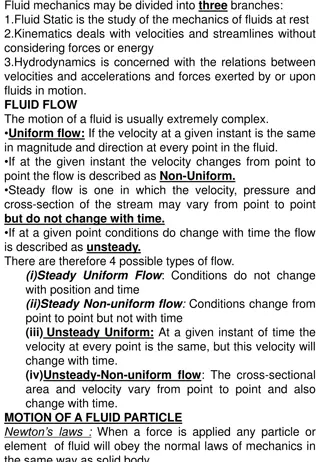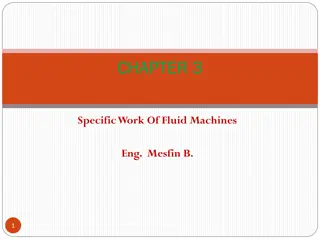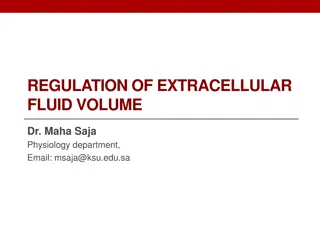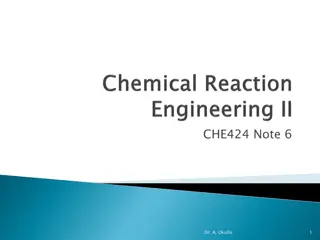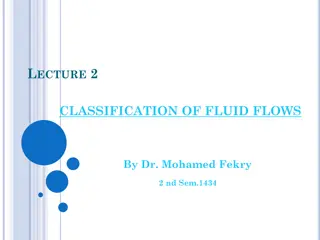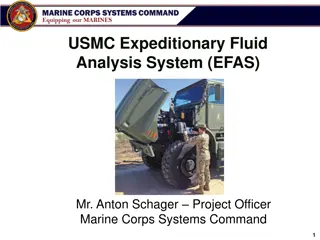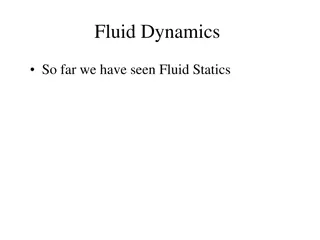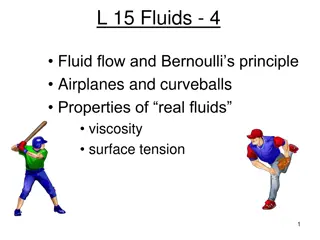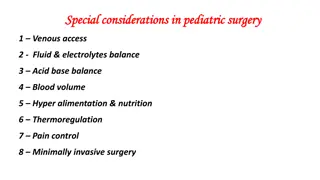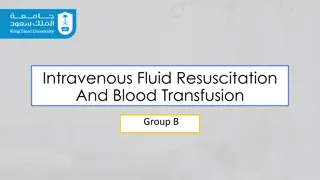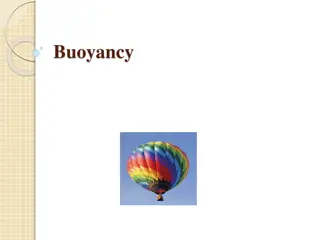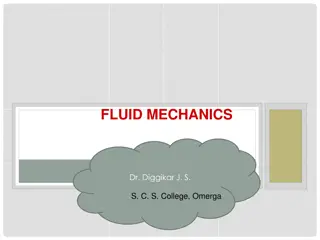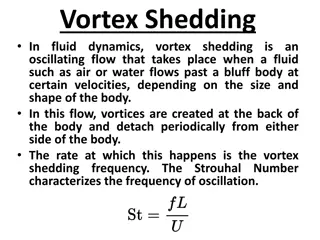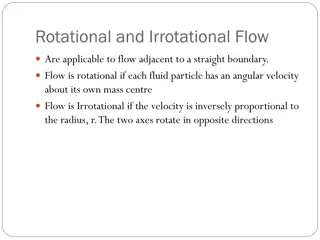FLUID DYNAMICS
World of fluid dynamics, analyzing fluid motion, identifying types of fluids, studying streamlines, and understanding key assumptions. Delve into concepts like pathlines, streaklines, and the impact of steady vs. unsteady flows. Discover the fundamental principles in fluid dynamics presented in a clear and informative manner.
Download Presentation

Please find below an Image/Link to download the presentation.
The content on the website is provided AS IS for your information and personal use only. It may not be sold, licensed, or shared on other websites without obtaining consent from the author.If you encounter any issues during the download, it is possible that the publisher has removed the file from their server.
You are allowed to download the files provided on this website for personal or commercial use, subject to the condition that they are used lawfully. All files are the property of their respective owners.
The content on the website is provided AS IS for your information and personal use only. It may not be sold, licensed, or shared on other websites without obtaining consent from the author.
E N D
Presentation Transcript
1 FLUID DYNAMICS Ms.Arockia Jayaseely,M.sc.,M.Phil., Assistant professor Dept. of Maths, shift-II
2 Fluids and solids Fluids is any substance that flows. Solid is any substance that does not flows. Fluid Dynamics Science treating the study of fluid in motion. it is a branch of mechanics. 1. 2.
3 fluids Fluids, they are two kinds Fluids, they are two kinds ************************************ Liquids --------> Incompressible Gas --------> Compressible
4 Kinematics of fluids in motion Real fluids and Ideal fluids Orthogonal curvilinear system Let P(x,y,z) be any point in space with respect to a triangular co-ordinate system , suppose there exists uniform curves (x,y,z)=k ( x,y,z)=m ---------1 (x,y,z)=n
5 Streamlines 1
6 2
7 It is based on the following assumptions: The fluid is non-viscous (i,e., the frictional losses are zero). The fluid is homogeneous and incompressible (i.e., mass density of the fluid is constant). The flow is continuous, steady and along the streamline. The velocity of the flow is uniform over the section
8 Stream line
9 Pathline & Streamline = dx udt v d x dx dy v dz 1. Pathline = ( t x , ) V = = = = , dy dt or dt dt u w = dz wdt dx dy v dz = ( ) // ( , ) d x V x t = = = d ( , ) d x k V x t Streamline 2. u w where is non a - vanishing scalar k 3. Flux through a surface: Only the normal component of the local relative velocity of fluid with respect to the surface ( ) can transport fluid across V/ f s n the surface.
10 Coincidence of Pathlines, Streamlines, Streaklines Unsteady flows: Pathlines, streamlines, and streaklines are not the same. Steady flows: Pathlines, streamlines, and streaklines are identical.
11 THANK YOU








